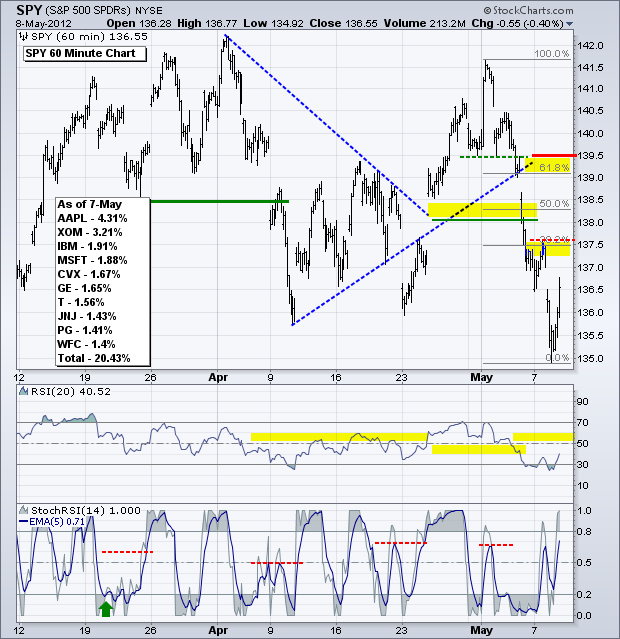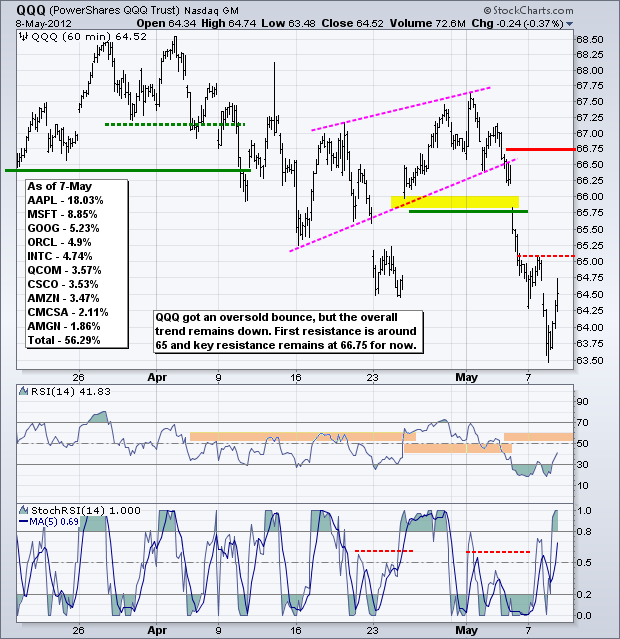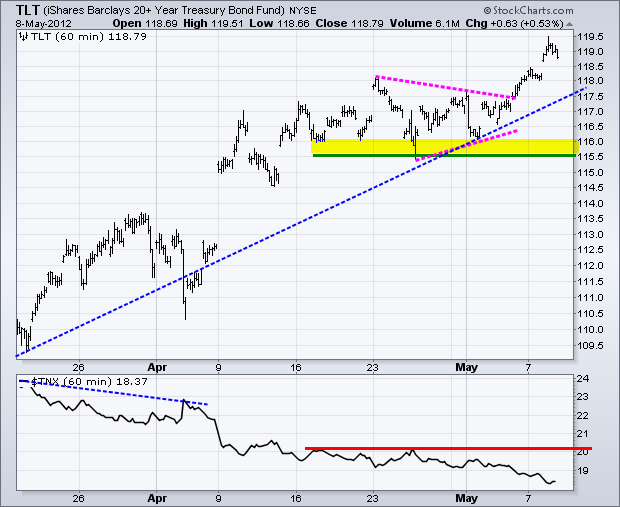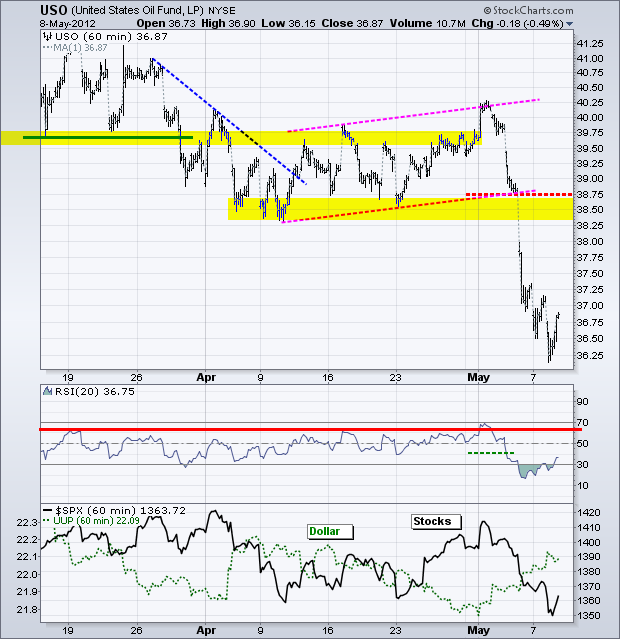The S&P 500 ETF (SPY) pierced its April lows with a sharp decline on the open and the bounced with an afternoon surge. Traders can expect this kind of volatility because bargain hunters and bottom pickers become active after sharp decline. SPY reached 135 on Tuesday's low, which means it was down around 5% form the April high. A 5% discount is certainly enough to entice under invested fund managers. Also note that the Russell 2000 ETF (IWM) and S&P MidCap 400 SPDR (MDY) hit support from their April lows. The Dow Industrials SPDR (DIA) remains one of the strongest because it is still a percent of two above its April low. The combination of these lows and oversold conditions means we could see a consolidation or oversold bounce. On the 30-minute chart, first resistance for SPY is marked around 137.5, which stems from the 38.2% retracement and Monday's high. Key resistance remains at 139.5, which stems from the 61.80% retracement and broken support. RSI resistance remains in the 50-60 zone.
**************************************************************************
The 20+ Year T-Bond ETF (TLT) started this current risk-off trade with a triangle breakout and move above the April high. Also note that the 7-10 year T-Bond ETF (IEF) is trading at a 52-week high. One must be risk-averse to buy instruments with such paltry yields. A breakout in treasuries is negative for stocks, oil and the Euro. Broken resistance and the March trendline mark first support in the 117.50 area. Key support remains in the 115.5-116 area.
**************************************************************************
The US Dollar Fund (UUP) extended its gains, but has yet to even challenge the April highs. This is where the real moment-of-truth resides. A breakout here would show some actual confidence in the Dollar. Broken resistance turns first support in the 21.95 area. Key support is now set at 21.875.
**************************************************************************
No change. The US Oil Fund (USO) broke support in the 39.75 area, consolidated with a rising wedge and then broke down on Thursday. The ETF continued sharply lower on Friday and is now quite oversold. Nevertheless, weakness in global equities and strength in the Dollar will continue to weigh on oil. The December low marks the next support level around 36. Broken supports in the 38.5-38.75 area turn into first resistance.
**************************************************************************
The Gold SPDR (GLD) fell like a rock as the Dollar continued its surge and equities extended their swoon. GLD broke pennant support and forged a new low. The pennant zone now becomes the first resistance zone. Key resistance remains in the 162 area for now. 40-period RSI clearly defines the downtrend in gold with at least four failures in the 50-60 zone. A definitive break above 60 is needed to turn momentum bullish.
**************************************************************************
Key Economic Reports:
Wed - May 09 07:00 - MBA Mortgage Index
Wed - May 09 10:30 - Oil Inventories
Thu - May 10 08:30 - Jobless Claims
Fri - May 11 08:30 – Producer Price Index (PPI)
Fri - May 11 09:55 - Michigan Sentiment
Charts of Interest: Tuesday and Thursday in separate post.
This commentary and charts-of-interest are designed to stimulate thinking. This analysis is not a recommendation to buy, sell, hold or sell short any security (stock ETF or otherwise). We all need to think for ourselves when it comes to trading our own accounts. First, it is the only way to really learn. Second, we are the only ones responsible for our decisions. Think of these charts as food for further analysis. Before making a trade, it is important to have a plan. Plan the trade and trade the plan. Among other things, this includes setting a trigger level, a target area and a stop-loss level. It is also important to plan for three possible price movements: advance, decline or sideways. Have a plan for all three scenarios BEFORE making the trade. Consider possible holding times. And finally, look at overall market conditions and sector/industry performance.













